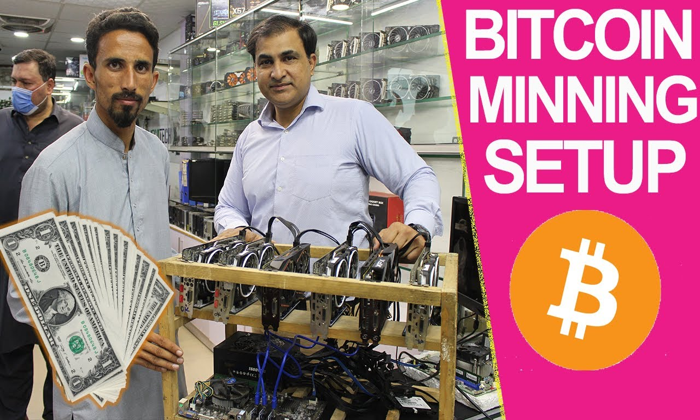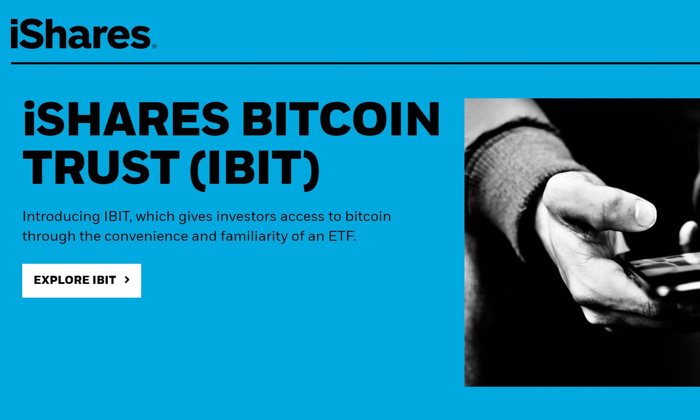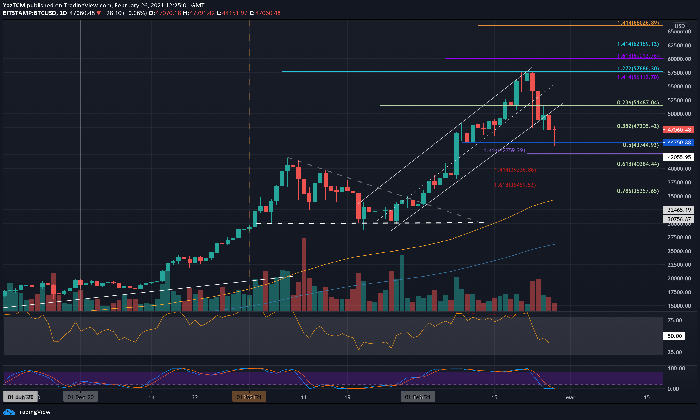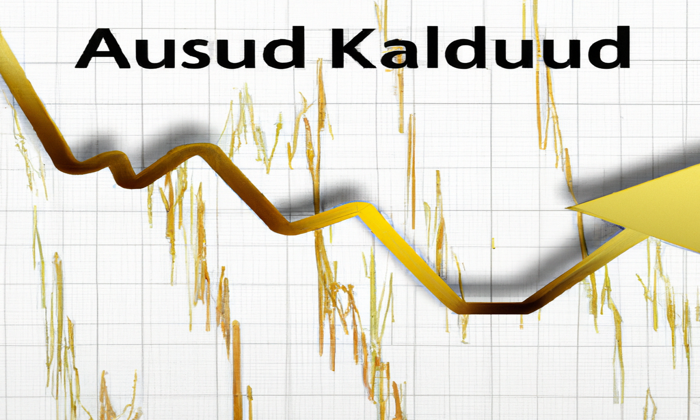DeFi crypto lending is rapidly transforming the financial landscape, with the market surpassing an astounding $19 billion in 2024, nearly doubling the activity seen in traditional centralized finance (CeFi). As open borrows within various DeFi protocols swelled to $19.1 billion, it’s clearer than ever that the demand for decentralized borrowing solutions is on a meteoric rise. This shift is further highlighted by a recent report indicating the total crypto lending market has reached approximately $30 billion, underscoring significant growth in the DeFi lending market. Key advantages, such as real-time transparency and flexible interest rates, position DeFi lending as an attractive alternative to centralized platforms that have predominantly dominated the industry. The evolving dynamics between CeFi and DeFi illustrate not only the burgeoning crypto lending growth but also the broader shift towards embracing blockchain lending solutions for greater financial autonomy.
Decentralized finance lending, often referred to as digital asset lending or blockchain-backed borrowing, is making significant waves in the global financial ecosystem. With the surge in interest rates and the increasing complexity of financial services, platforms that facilitate peer-to-peer borrowing are becoming increasingly popular among cryptocurrency users. The emergence of innovative lending protocols has led to competitive alternatives to traditional finance, drawing attention away from established centralized lenders. As these decentralized systems provide users with direct access to capital, they introduce a level of flexibility and security that is unparalleled in conventional banking scenarios. This transformative shift not only democratizes access to finance but also challenges the status quo maintained by CeFi in the lending industry.
The Rise of DeFi Crypto Lending
The DeFi crypto lending landscape has experienced unprecedented growth, reaching over $19 billion in open borrows by late 2024. This remarkable surge signifies a strong shift from traditional centralized lending platforms (CeFi) as more crypto enthusiasts and investors favor the flexibility and innovation offered by decentralized finance. The integration of smart contracts within DeFi protocols enables seamless peer-to-peer transactions, allowing users to lend and borrow directly without the need for intermediaries.
As the DeFi lending market matures, it continues to attract significant interest from both retail and institutional investors. The advantages of decentralized protocols, such as lower fees, more accessible lending options, and enhanced transparency, are driving users to embrace these platforms. This trend signals a broader understanding and acceptance of blockchain lending technologies, paving the way for sustained growth well into the future.
Understanding CeFi vs DeFi Lending
Comparing CeFi and DeFi lending platforms illuminates the differences that are influencing user choices. Centralized finance (CeFi) relies heavily on traditional financial mechanisms and institutions, which can affect how products are offered and regulated. In contrast, decentralized finance uses blockchain technology to facilitate transactions directly between users, removing the need for intermediaries. This fundamental distinction not only lowers operational costs but also enhances user trust through transparent processes.
Moreover, while CeFi platforms like Tether dominate the lending market, they also face challenges related to trust and systemic risks that have become apparent in recent years. DeFi protocols, on the other hand, position themselves as more resilient against such issues by ensuring automated liquidation mechanisms and real-time transparency for users, making them attractive alternatives for those seeking greater control over their financial activities.
Exploring Key Players in the DeFi Lending Market
The DeFi lending market is home to various innovative platforms that play crucial roles in its rapid expansion. Notable players like Aave, Compound, and MakerDAO are examples of DeFi protocols that have developed user-friendly interfaces to facilitate decentralized borrowing and lending. Each of these platforms integrates unique features that cater to different user needs, from variable interest rates to instant liquidity. The ongoing competition among these players fosters an environment ripe for continuous improvement and innovation.
Additionally, the growing adoption of DeFi lending solutions has attracted significant funding and attention from venture capitalists and institutional players. With an increasing number of users flocking to these platforms and the overall market dynamics evolving, major DeFi players find themselves at the forefront of a financial revolution that transcends traditional lending, further establishing themselves as key players in the decentralized economy.
The Impact of DeFi Protocols on Borrowing Practices
DeFi protocols are fundamentally reshaping borrowing practices by allowing users to leverage their crypto assets without the constraints typically imposed by centralized institutions. By utilizing collateralized loans, borrowers can gain access to funds while minimizing risks associated with price fluctuations of their assets. This innovative approach not only broadens financial accessibility but also empowers users to engage in more sophisticated financial strategies, such as yield farming.
Users are increasingly recognizing the benefits of using DeFi protocols, including lower barriers to entry and the customization of lending terms based on their individual risk profiles. This heightened awareness promotes a more inclusive financial ecosystem where users can take better control over their finances, showcasing a tangible shift away from traditional banking solutions towards an environment that values decentralization and user empowerment.
The Future of the Crypto Lending Growth
The future of crypto lending appears bright, particularly as DeFi frameworks continue to gain traction within the financial landscape. Analysts predict that the crypto lending growth will maintain its upward trajectory driven by technological advancements and increasing user adoption. As protocols enhance their offerings, the market will likely see improved security measures, more diverse lending options, and better user experiences that further entrench DeFi lending in the broader financial sector.
In addition, the evolving regulatory landscape around cryptocurrencies and DeFi platforms could provide a stronger foundation for sustained growth. As governments and regulatory bodies begin to create clearer guidelines, both centralized and decentralized lending systems may benefit from increased legitimacy and public trust. This, in turn, could lead to an influx of capital and a wider adoption of DeFi products, solidifying their place in the future of finance.
Navigating Risks in DeFi Lending
While DeFi lending presents numerous opportunities, it is essential for users to navigate the inherent risks associated with these platforms. Smart contract vulnerabilities, market volatility, and liquidity concerns can pose significant challenges for users engaging in DeFi lending. Despite these risks, the potential rewards often outweigh them for knowledgeable individuals willing to perform due diligence and understand the specific dynamics of each protocol.
Furthermore, the community-driven nature of DeFi encourages transparency and collaborative risk management. Many platforms implement measures such as insurance fund mechanisms and governance tokens, allowing users to participate in decision-making and contribute to enhanced security. By embracing a proactive approach to risk management, users can mitigate potential pitfalls and maximize their investment returns in the evolving DeFi lending landscape.
The Importance of Transparency in Blockchain Lending
Transparency is a cornerstone of the DeFi lending model, setting it apart from traditional financial systems. Users engaging in blockchain lending benefit from publicly verifiable transactions that enhance accountability and trust among participants. This transparency not only fosters a sense of community but also encourages users to contribute to the platform’s ecosystem through governance mechanisms, further strengthening the decentralized model.
Moreover, open-source protocols allow developers and users alike to scrutinize code and identify vulnerabilities, leading to continuous improvements and greater security. In contrast to CeFi, where users must trust that intermediaries manage funds responsibly, DeFi lending offers a level of openness that aligns with the principles of decentralization and democratization of finance. This commitment to transparency is essential for building confidence and encouraging wider adoption of digital asset lending.
Leveraging Smart Contracts for Efficient Lending
Smart contracts serve as the backbone of the DeFi lending process, enabling automated and trustless transactions. These self-executing contracts reduce operational inefficiencies by eliminating the need for manual processing and third-party involvement, thereby streamlining borrowing and lending activities. As a result, participants can enjoy faster execution times and a more seamless experience when utilizing DeFi protocols.
The programmability of smart contracts also allows for innovative features that can enhance lending mechanisms, such as dynamic interest rates based on market conditions or programmable collateral requirements. This adaptability empowers users to make informed decisions and optimize their financial strategies in real time. As DeFi technology progresses, the role of smart contracts will only grow, further driving advancements in blockchain lending and reshaping financial ecosystems.
Strategies for Success in the DeFi Lending Space
To navigate the rapidly evolving DeFi lending space successfully, users must equip themselves with knowledge and strategies tailored to this dynamic landscape. Understanding key protocols, assessing their respective risks, and analyzing market trends can provide a competitive edge. Participating in community discussions, following industry trends, and utilizing educational resources can further empower users to make informed decisions within the DeFi ecosystem.
Additionally, diversifying investments across various DeFi platforms can help users mitigate risks while maximizing potential returns. By spreading their assets, participants can take advantage of the unique features and offerings provided by different protocols, whether through competitive interest rates, early access to new products, or governance participation. As the DeFi lending market continues to evolve, adopting proactive strategies will be integral to achieving success.
Frequently Asked Questions
What is DeFi crypto lending and how does it differ from CeFi lending?
DeFi crypto lending refers to decentralized finance platforms that allow users to lend and borrow cryptocurrencies directly through smart contracts, bypassing traditional intermediaries. In contrast, CeFi lending involves centralized finance platforms that manage transactions and hold user funds. The DeFi lending market has surged, with open borrows crossing $19 billion, nearly doubling the $11 billion in CeFi as users seek more transparency and control.
How has the crypto lending growth impacted the DeFi lending market?
Crypto lending growth has significantly impacted the DeFi lending market, resulting in a dramatic 959% increase in open borrows from $1.8 billion in late 2022 to $19.1 billion by the end of 2024. This expansion is attributed to users preferring DeFi protocols for their transparency, flexibility, and innovative solutions compared to traditional centralized options.
What are some key DeFi protocols involved in crypto lending?
Key DeFi protocols involved in crypto lending include platforms like Aave, Compound, and MakerDAO. These protocols utilize smart contracts to facilitate peer-to-peer lending, offering users direct control over their assets while providing real-time transparency and automated liquidation mechanisms.
What advantages do DeFi lending platforms offer over CeFi platforms?
DeFi lending platforms offer several advantages over CeFi platforms, including greater transparency, lower fees, decentralized governance, and the absence of intermediaries. Users can access flexible interest rates and have direct control over their assets, reducing trust issues commonly associated with centralized finance.
How does blockchain lending enhance the security of crypto loans?
Blockchain lending enhances security by utilizing smart contracts that automate and enforce the terms of loans without human intervention. This reduces the risk of fraud and ensures that all transactions are securely recorded on an immutable ledger, providing a high level of trust and transparency for users in the DeFi lending market.
What trends are shaping the future of DeFi lending in the crypto space?
Trends shaping the future of DeFi lending include increased user adoption, integration of advanced financial instruments, a focus on interoperability between different blockchains, and continuous innovation in DeFi protocols. As DeFi grows, we expect to see a wider variety of lending products that cater to the evolving needs of users.
Why are users increasingly shifting towards the DeFi lending market?
Users are increasingly shifting towards the DeFi lending market due to its advantages such as higher yields, lower transaction costs, and the elimination of centralized control. The recent growth in DeFi borrowing—nearly 19 times that of CeFi—indicates a marked preference for decentralized systems that prioritize user empowerment and innovation.
What challenges does the DeFi lending market face?
The DeFi lending market faces challenges such as regulatory uncertainty, security risks related to smart contract vulnerabilities, and the still evolving technological landscape. Additionally, managing liquidity and ensuring user confidence amidst rapid growth will be crucial for the sustainability of DeFi protocols.
How are decentralized applications (dApps) influencing DeFi crypto lending?
Decentralized applications (dApps) are influencing DeFi crypto lending by providing user-friendly interfaces for engaging with DeFi protocols. They simplify the lending experience, allowing users to interact seamlessly with smart contracts and access lending services without needing extensive technical knowledge.
What is the potential of DeFi protocols in the future of financial services?
DeFi protocols hold significant potential in reshaping the future of financial services by offering innovative lending solutions, democratizing access to financial products, and creating a more inclusive financial landscape. As adoption increases, we can expect DeFi to play a critical role in bridging gaps left by traditional financial systems.
| Key Point | Details |
|---|---|
| DeFi Lending Growth | DeFi crypto lending surpasses $19 billion, nearly doubling CeFi’s $11 billion. |
| Market Size | Overall crypto lending market valued at approximately $30 billion as of December 31. |
| User Engagement | DeFi platforms allow direct engagement with smart contracts, enhancing user experience. |
| Growth Rate | Remarkable growth of 959% in DeFi from $1.8 billion in late 2022 to current figures. |
| CeFi Comparison | CeFi lending dominated by Tether, Galaxy, and Ledn, making up 88.6% of the market. |
| User Preferences | Shift towards DeFi reflects a desire for innovation and reduced trust issues inherent in CeFi. |
Summary
DeFi crypto lending is experiencing a remarkable transformation in the financial landscape, with open borrows exceeding $19 billion in 2024. This dynamic shift indicates a strong preference among users for decentralized finance over traditional centralized lending platforms. As DeFi continues to provide transparency, flexibility, and innovative solutions, it is set to redefine the borrowing and lending ecosystem, overcoming challenges faced by centralized finance.
DeFi crypto lending is experiencing a transformative shift in the financial landscape, surpassing $19 billion in open borrows as of 2024. This remarkable growth has nearly doubled the figures of its centralized finance (CeFi) counterpart, which stood at $11 billion in the same timeframe. According to a recent report by Galaxy, the DeFi lending market is now a crucial player in the broader crypto ecosystem, with a total market size reaching approximately $30 billion by the end of the year. As users increasingly prefer decentralized platforms, the advantages of DeFi protocols—like real-time transparency and reduced reliance on intermediaries—are becoming increasingly appealing. This rising trend reflects a significant pivot in user trust and preference towards blockchain lending solutions that empower individuals.
The emergence of decentralized finance (DeFi) lending represents a groundbreaking evolution in how individuals borrow and lend cryptocurrencies. With decentralized applications allowing users direct access to blockchain lending practices, the popularity of these financial alternatives is on the rise. Unlike traditional centralized finance (CeFi) systems which rely heavily on intermediaries, DeFi apps create a more transparent and efficient ecosystem. The continuous ascent of the crypto lending growth reflects a robust appetite for innovative financial products that uphold security and autonomy. As the DeFi lending market expands, it is crucial to explore the nuanced differences between CeFi and DeFi to understand their impact on the future of finance.
















Leave a Reply